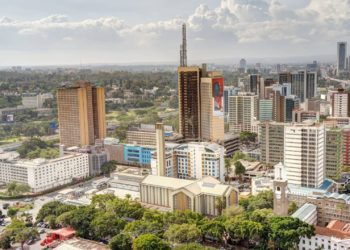The Kenya National Bureau of Statistics (KNBS) has just unveiled its latest data on Consumer Price Indices for the month of October, revealing a notable increase in the country’s year-on-year inflation rate.
According to the report, the overall inflation rate rose by 0.1 percent points, reaching 6.9 percent in October, up from 6.7 percent in September this year. This 6.9 percent inflation rate is the highest since June when it stood at 7.3 percent.
The surge in inflation can be attributed to a rise in prices in three key divisions, which account for more than 57 percent of the weights within the 13 broad categories. Notably, the prices of commodities under the “Transport” category increased by a significant 13.6 percent between October 2022 and October 2023.
This month’s rise in transportation costs is mainly due to the increased prices of petrol and diesel by 2.7 percent and 2.2 percent, respectively.
Another division that experienced a substantial increase was “Housing, Water, Electricity, Gas, and other fuels,” registering a 7.8% upturn. This was driven by a 7.3 percent surge in gas prices, a 5.0 percent increase in electricity costs for 200 kWh, a 3.3 percent rise for 50 kWh, and a 1.2 percent hike in kerosene prices between September and October 2023.
The “Food and Non-alcoholic Beverages” division also witnessed a notable increase, rising by 1.3 percent between September and October 2023. Key contributors to this increase include the prices of potatoes, tomatoes, oranges, and beef, which rose by 9.6, 5.4, 2.8, and 2.5 percent, respectively. However, this increase was partially offset by decreases in the prices of wheat flour, fortified maize flour, and sifted maize flour, which fell by 0.8, 3.2, and 4.1 percent, respectively.
In contrast, the “Education services” and “Insurance and financial services” sectors remained stable, with no significant changes in their price indices.
It is worth noting that while Kenya’s overall inflation rate has been on the rise over the past three months, it still falls within the Central Bank of Kenya’s target range of 2.5% to 7.5%. Nevertheless, with the ongoing devaluation of the Kenyan shilling, there are concerns that the rate of inflation may continue to rise in the coming months.
The Monetary Policy Committee is expected to convene in December to deliberate on measures aimed at stabilizing the inflation rate. Should the need arise, they may call for an earlier meeting to address this issue.


















